M41 Howitzer Motor Carriage Self-Propelled Artillery Mounting (USA)
It should be noted, the M41 HMC self-propelled gun did not appear immediately. The technical assignment for the creation of a promising self-propelled gun with a howitzer armament caliber 155 mm appeared at the end of 1942, but the project did not immediately receive the approval of the military. In accordance with the requirements, the prospective ACS should have been able to accompany tank units and support them with fire. As a basis for the new armored vehicle, the chassis of the light tank M5 Stuart was proposed. On it should have mounted howitzer type M1 and a set of necessary equipment.
The project is promising self-propelled guns received the designation T64. The development of the new machine did not take long: the preliminary project was approved already in December of 42. Soon all the remaining design work was carried out, which made it possible to proceed to the construction and testing of new equipment. According to reports, the T64 project proposed to use the basic layout ideas already worked out within the framework of the M12 GMC ACS project. For example, in order to make room for a cannon installation, it was planned to transfer the engine of the base tank from the stern to the central part of the hull.
In the first months of 1943, the first prototype of the ACS T64 came to the test and, in general, showed itself well. The existing chassis of the serial tank did not have significant shortcomings, which could open the way for the new self-propelled gun. However, the military department decided otherwise. A proposal to develop a so-called. Light Combat Team - a family of armored vehicles for various purposes, built on the basis of a common chassis. In order to achieve the highest possible performance, it was decided to build a new family based on the new light tank M24 Chaffee.
At the end of 1943, a new project was launched with the designation T64E1, the purpose of which was to transfer the artillery part of the base T64 to a new tank chassis. In doing so, the M24 tank chassis should be redesigned accordingly. Work on the new project began in January of 44, and, due to a number of circumstances, lasted until the end of the year. The design of the ACS T64E1 was completed only in December.
Armored "Chaffee" had a typical layout for American tanks of the time. In front of the case were installed transmission units and located control compartment. At the stern, the engine was mounted, which was connected to the transmission with a long drive shaft. The latter, in turn, took place under the floor of the fighting compartment. Saving such a layout when installing 155-mm guns was impossible, so the authors of the T64 and T64E1 projects resorted to significant design modifications already tested on earlier equipment with similar weapons. Due to the lack of a tower with weapons, the engine was moved to the central part of the body, shortening the drive shaft. This method was released large volume in the stern of the hull, which is given under the open fighting compartment.
The body of the ACS, as in the case of the base tank, was made of armor parts with thickness from 15 to 38 mm. According to others, the maximum thickness of self-propelled armor does not exceed 12,7 mm. T64E1 retained the basic features of the base machine body, but received some new units. The frontal projection was protected by three inclined sheets. The central engine compartment was covered with a horizontal roof. In the stern provided frontal and side sheets felling. Due to the correct layout of the units, the bottom of the hull was the floor of the fighting compartment. The hull also had a folding feed sheet connected to the vomer.
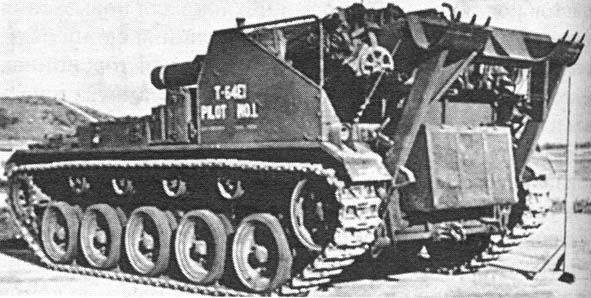
Self-propelled aft. Photo Aviarmor.net
Prospective self-propelled gun T64E1 equipped with two petrol engines Cadillac 44T24 110 horsepower installed in the middle of the hull. Through the driveshaft, two hydraulic clutches, two planetary gearboxes, double differential, a de-multiplier and a mechanical gearbox, the engine torque was transmitted to the front drive wheels. In order to simplify and reduce the cost of mass production, it was decided not to make fundamental changes to the composition of the power plant. In fact, only the location of the engine has changed, due to the need to install new weapons.
The undercarriage of the base tank M24 Chaffee passed to the T64E1 ACS without any changes. On each side of the hull there were six dual road wheels with individual torsion bar suspension. Also, part of the road wheels was equipped with additional shock absorbers. Due to the relatively small diameter of the rollers, the upper branch of the caterpillar was supported by four rollers (on each side). The drive wheels were located in the front of the hull, guides - in the stern. The chassis track consisted of 86 tracks 586 mm wide.
In the aft compartment of the hull it was proposed to mount racks for ammunition and installation for the gun. To simplify the design, these two products were combined into a common unit. A rack with cells for ammunition was connected to the bottom and sides of the hull, and the gun mount was located on its cover. With the help of manual drives, the calculation could point the gun at 20 ° 30 'to the left or 17 ° to the right of the machine axis horizontally, and the vertical pickup angles were limited to -5 ° and + 45 °. In the cells of the combat compartment rack there was a place for 22 shots of separate captive charging.
As the main weapons for the T64E1, an 155 mm howitzer M1 (also known as M114) was proposed. This gun was equipped with a rifled barrel length 24,5 caliber and had a piston gate. The barrel was mounted on hydropneumatic recoil devices. For use with the M1 howitzer, several types of high-explosive, smoke, chemical, lighting, etc. projectiles were offered. The maximum initial velocity of the shells reached 564 m / s, the maximum firing range was of the order of 14,95 km.
In the fighting compartment, it was also proposed to carry additional armament for self-defense, consisting of two Thompson submachine guns and three M1 carbines. Stationary machine gun on the turret was not provided.
Like other American-made ACSs of the time, built on the chassis of existing tanks, the promising T64E1 was unable to fire on the move. For shooting, one had to take a position and fix oneself on it. To keep the armored vehicle in place it was proposed to use a feed coulter. This device consisted of two support beams and a blade with stops for digging into the ground. Given the experience of previous projects, the coulter was not equipped with a hydraulic actuator, but with a manual winch. After arriving at the position, the crew had to lower the coulter and then take it back, digging it into the ground. Before leaving the position, it was necessary to move forward and then raise the vomer.
The crew of the self-propelled gun T64E1 was to consist of five people: the driver, the commander and three gunners. For obvious reasons, all crew members took part in the shooting of the main weapon.
Due to the preservation of the main units of the base armored vehicle, the forward-looking self-propelled gun was little different in size and weight from the Chaffee tank. The length of the ACS reached 5,8 m, width 2,85 m, height - about 2,4 m. The combat weight reached 19,3 t.
Maintaining the basic power plant, as well as a slight increase in the weight of the machine made it possible to achieve sufficiently high mobility characteristics. The self-propelled speed on the highway reached 55 km / h, the power reserve reached 160 km. There remained the possibility of overcoming various obstacles with parameters at the level of the tank M24.
To work with ACS T64E1, several types of ammunition carriers were offered. Initially with self-propelled guns it was planned to use a T22E1 type conveyor based on T64E1. In the stern of the T22 were placed racks for placing ammunition. Later, it was decided to abandon the T22E1 and use the new machine M39. In practice, not only specialized tracked vehicles, but also ordinary trucks were often used along with ACS.
The use of the finished chassis not only affected the speed of project development, but also reduced the time required for the construction of the prototype. The design work was completed at the beginning of the winter 1944 of the year, and already in December the first prototype of the promising ACS T64E1 with howitzer armament was assembled. Soon the car came to the test, where it showed the correctness of the chosen solutions, and also confirmed the calculated characteristics. Testing experienced cars were conducted at the Aberdeen Proving Ground.
The presented sample fully complied with the requirements, and after the tests was adopted for service. The order of adoption was signed on 28 June 1945 of the year. Self-propelled gun received the official designation M41 Howitzer Motor Carriage. Shortly after the start of operation, the new military equipment, like other armored vehicles before it, received an unofficial nickname: Gorilla ("Gorilla"). Perhaps this nickname was to some extent associated with the unofficial name of the M12 ACS, also known as "King Kong."
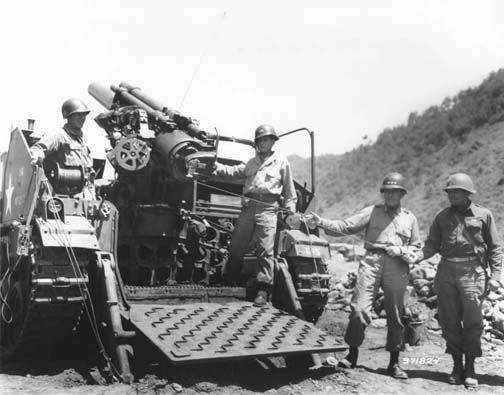
Combat use of self-propelled guns, rack compartment rack is clearly visible. Photo Aviarmor.net
Without waiting for the end of the test, the US Army signed the first contract for the supply of machines T64E1 / M41. Already in May, Massey-Harris, the company engaged in the construction of M45 Chaffee light tanks, received an order for the production of 250 serial self-propelled guns. This fact allowed to a certain extent to simplify and accelerate the construction of self-propelled guns.
The streamlined process for the production of tanks allowed the contractor to immediately begin building new self-propelled guns. However, until the end of World War II, only 85 combat vehicles of a new type were manufactured. Later, the start of production did not allow the "Gorillas" to get to the war, but the troops still began to master the new technology. According to several sources, after the end of the war, it was decided to abandon the further construction of self-propelled guns. Army handed 85 built machines, and the production of the rest was canceled.
A number of M41 HMCs were transferred by the United States to foreign countries. There is information about the transfer of one self-propelled gun to the British military, which should have been tested and studied. Also, a part of the built cars was sent to France, where it was put into service and exploited for a certain time, until a new equipment of a similar class appeared.
The M41 Howitzer Motor Carriage ACS appeared too late to enter World War II. Nevertheless, the world was still restless, because of what this technique was still able to participate in the hostilities. In 1950, most of the M41 was sent to Korea to participate in the war that began there. Despite the relatively small number, self-propelled guns were actively used on all sectors of the front and provided a complete solution of the tasks. As expected at the development stage, self-propelled artillery installations clearly demonstrated their advantages over towed guns.
The intensity of the Gorilla operation in Korea is well illustrated by the fact that it was this kind of equipment, which was part of the 92 battalion of the field artillery, made two “anniversary” shots at the enemy, which were 150000 and 3000000 in the course of the campaign. At the same time, artillery units armed with M41 suffered some losses. At least one such self-propelled gun in relatively good condition even became a trophy of the enemy.
The Korean War turned out to be the first and last armed conflict in the career of the ACN M41 HMC. The operation of this technology continued until the mid-fifties, after which it was considered unpromising. Due to the moral and physical obsolescence of the chassis and weapons, further use of ACS Gorilla did not make sense. In the second half of the fifties, all available cars of this type were written off. Most of them went for recycling.
According to reports, only two self-propelled artillery mounts of the M41 Howitzer Motor Carriage type have survived to our time. One of them - according to some sources, is the first prototype - is stored in the museum of the Aberdeen Proving Ground. Another copy is in the Beijing Military Museum (China). Probably, this machine was used in the Korean War and became a trophy of the Chinese troops, after which it was transferred to the museum.
On the materials of the sites:
http://historyofwar.org/
http://aviarmor.net/
http://m24chaffee.com/
http://militaryfactory.com/
http://globalsecurity.org/
http://the.shadock.free.fr/
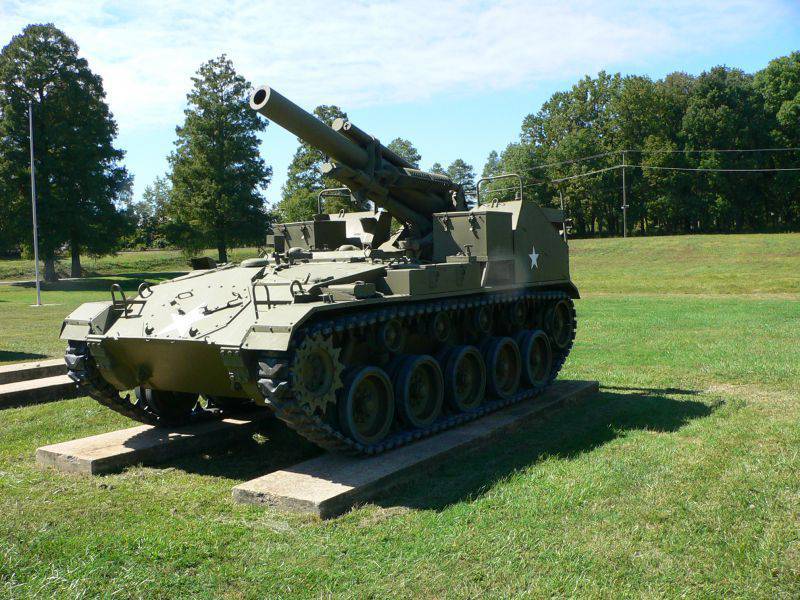
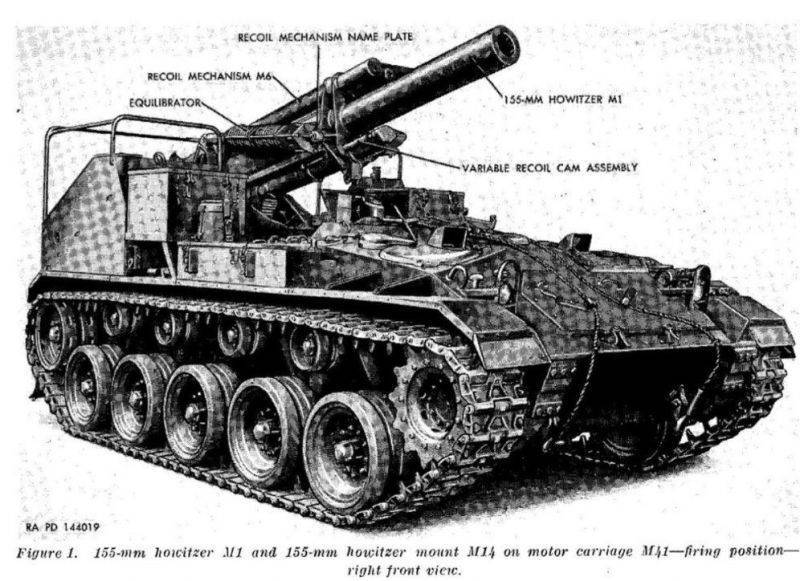
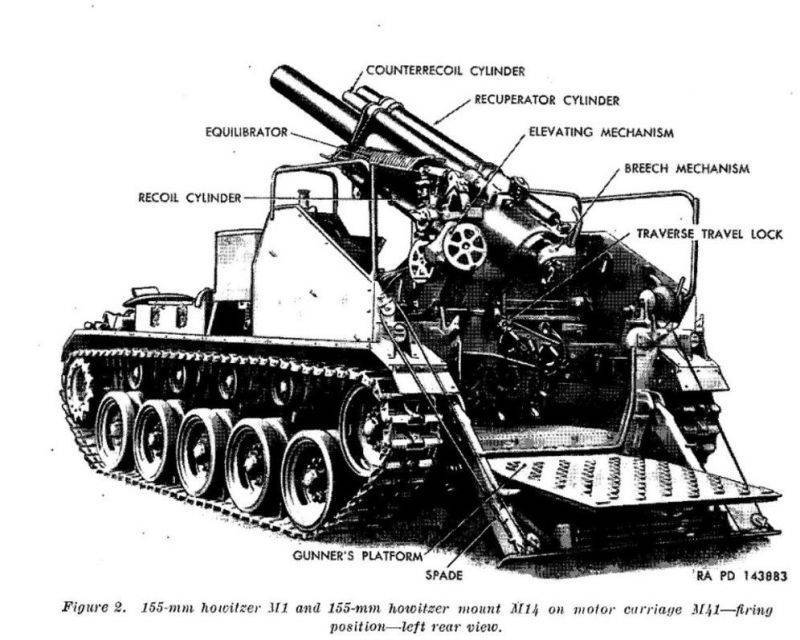
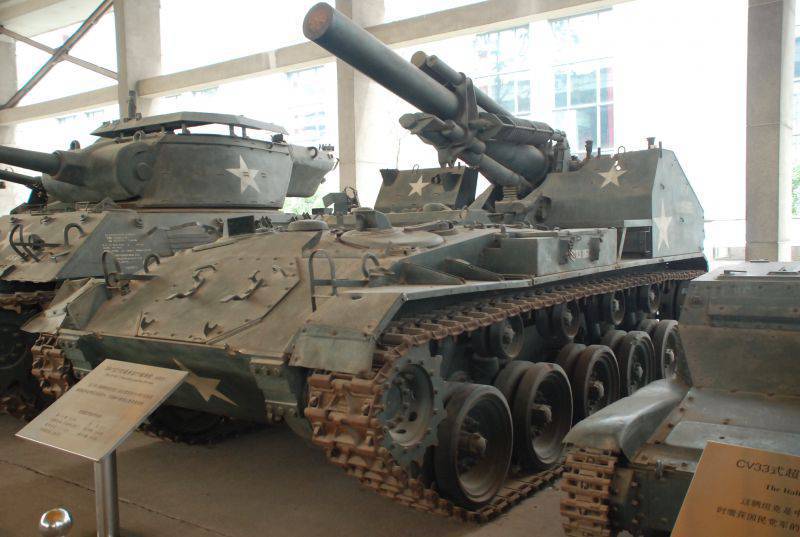
Information